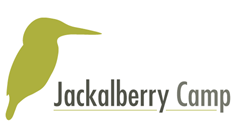Nkasa Rupara National Park
Once known as Mamili the Natinal Park was renamed in 2013 to Nkasa Rupara NP.
Nkasa and Rupara are Siyeyi words referring to the two islands of the park that never get flooded. The old Name Mamili, referred to the seven chiefs of that name who, since 1864, have ruled over the Mafwe people living in this eastern section of the Caprivi Region.
 Nkasa Rupara National Park’s ecosystem types are typical of the Okavango Delta wetlands and associated habitats, with relatively narrow, permanently filled main channels of the Kwando / Linyanti Rivers, several periodically (to an extent this can be seasonal) flooded channels, the largest seasonally inundated grasslands in Namibia, and wooded islands containing tree species that are exceptionally rare in a national context. The Kwando / Linyanti Rivers have a relatively narrow catchment, most of which lies in Angola. As rains in Angola can easily miss the catchment, the river’s flooding regime can vary considerably, with the whole area extensively flooded in some years while in others much of it remains dry.
Nkasa Rupara National Park’s ecosystem types are typical of the Okavango Delta wetlands and associated habitats, with relatively narrow, permanently filled main channels of the Kwando / Linyanti Rivers, several periodically (to an extent this can be seasonal) flooded channels, the largest seasonally inundated grasslands in Namibia, and wooded islands containing tree species that are exceptionally rare in a national context. The Kwando / Linyanti Rivers have a relatively narrow catchment, most of which lies in Angola. As rains in Angola can easily miss the catchment, the river’s flooding regime can vary considerably, with the whole area extensively flooded in some years while in others much of it remains dry.
The periodic inundation, linked to the flooding regime of the Kwando River and not to the local wet season, is the most critical ecological driver for the Park’s ecosystems. It determines the distribution pattern of woody vegetation, which almost exclusively grow on higher “islands” that are seldom flooded. These islands contain prime examples of tree species such as Knob Thorn (Acacia nigrescens), Paper-bark Acacia (A. sieberiana), Sickle-leaved and Large-leaved Albizias (Albizia harveyi and A. versicolor respectively), White-stemmed Acacia (A. polyacantha), Ordeal tree (Erythrophleum africanum), False Mopane (Guibourtia coleosperma), and Monkeybread (Piliostigma thonningii), all of which have relatively narrow Namibian ranges. Some of these species, such as White-stemmed Acacia, are closely associated with termitaria.
Flooding regimes also determine the extent and duration of ponds and pans throughout the dry season. These semi-permanent small water bodies provide an important grazing and food resource for a number of mammal and bird species throughout the year. The Park does not only consist of wet grasslands; grasslands on somewhat higher ground may be interspersed with woodlands and appear to be seldom flooded, resulting in a recognisably different species composition and general dynamic.
Many of the islands contain tree species that are strongly associated with the ubiquitous termitaria and can attain heights of up to 20m or more. The vegetation types in most of the Park are considered to be moderately sensitive to sensitive and of medium to high biodiversity significance. Together the above features make for a unique wildlife experience in Namibia, very similar in character to the Okavango Delta.
 Seasonal fires, both management and accidental, are a second set of important ecological drivers, regulating the relative dominance of tall grass stands and keeping woody plants at bay. The MET follows a management policy of controlled burning, with the aim of burning at least a third of the Park’s surface area each year, emphasising early cool burns, to prevent the build-up of combustible material. As in most of the region, accidental or deliberately set fires, especially those that occur late in the dry season, can have devastating consequences for the vegetation and for the animals that depend on it for food and shelter.
Seasonal fires, both management and accidental, are a second set of important ecological drivers, regulating the relative dominance of tall grass stands and keeping woody plants at bay. The MET follows a management policy of controlled burning, with the aim of burning at least a third of the Park’s surface area each year, emphasising early cool burns, to prevent the build-up of combustible material. As in most of the region, accidental or deliberately set fires, especially those that occur late in the dry season, can have devastating consequences for the vegetation and for the animals that depend on it for food and shelter.
The Park contains a number of large mammal species, such as lechwe, waterbuck and buffalo, (Syncerus caffer) that are all rare in the Namibian context. Its impala (Aepyceros melampus) and lechwe populations are stable or growing. It contains some special bird species, such as Luapula Cisticola (Cisticola luapula) and the regionally endemic Slaty Egret (Egretta vinaceigula). The Park also contains a small population of the globally and nationally endangered Wattled Crane. There are few resident prides of lion (Panthera leo) in the park.
The Park serves as an important corridor and buffer for all large mammal species moving to and from Botswana. The Park often contains especially large herds of elephant and has resident buffalo, for which it is particularly well known. These herds are probably linked to Botswana herds through dispersal. As with all the other wetland parks, healthy populations of hippo (Hippopotamus amphibius) and crocodiles (Crocodilus niloticus) occur here. Crocodile populations might indeed be growing.
The Park has in the past experienced high poaching levels. For this and other reasons, populations of lechwe, reedbuck, impala and lion have declined over the years, although all these appear to be making a comeback. Both lechwe and reedbuck populations are affected by the flooding though, with lechwe increasing in wetter periods and reedbuck in drier periods. Due to the Park’s wetland and wilderness nature, artificial water is not provided for game.




